
FEMA Didn’t Stop $3.7B in Improper Payments
January 16, 2023
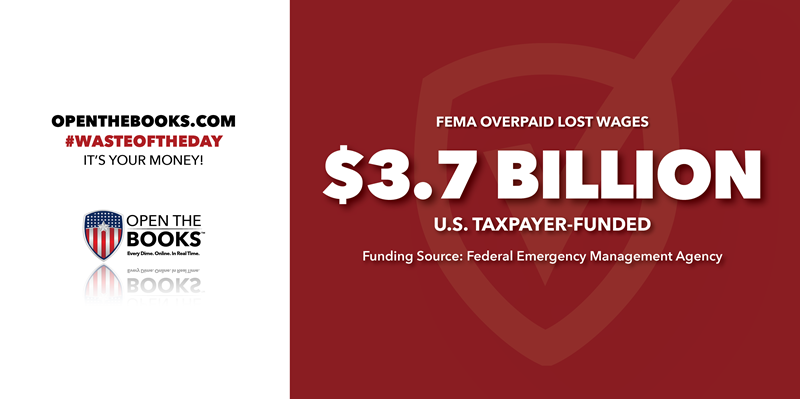
The Federal Emergency Management Agency did not have controls in place to prevent over $3.7 billion of improper payments from the lost wages assistance program, a recent report from the Office of the Inspector General for the Department of Homeland Security found.
In 2020, in response to the Covid-19 pandemic, FEMA took funds from the Disaster Relief Fund for lost wages assistance to “help ease the economic burden for people who lost work because of coronavirus disease.” FEMA partnered with 54 state workforce agencies to rush $44 billion out the door to people who lost their jobs due to Covid-19.
Thanks to a lack of basic accounting controls, 21 of those 54 agencies distributed more than $3.7 billion in improper payments — in just six weeks. Included in the $3.7 billion of improper payments is $3.3 billion in potentially fraudulent payments, $21.6 million in overpayments, and $403 million in payments made without required self-certification attestations.
The report found FEMA did not institute policies to ensure state workforce agencies would not make improper payments, despite being required to do so by federal law. It also failed to ensure these agencies promptly reported allegations of fraud to appropriate agencies.
The report blamed the rushed implementation of this program for its failures, citing the short time of 11 days that the agency had to begin disbursing $44 billion worth of funds.
Unfortunately, this carelessness is part of a broader trend of improper payments. In 2021, the Government Accountability Office found $281 billion worth of improper payments across government agencies in just one year.
While it’s understandable that there will be some improper payments in Covid-era programs, it’s unacceptable to make $3.7 billion in improper payments in just six weeks because of a lack of basic accounting controls.
Chicago Settlements Cost Taxpayers Over $93M Annually
January 17, 2023
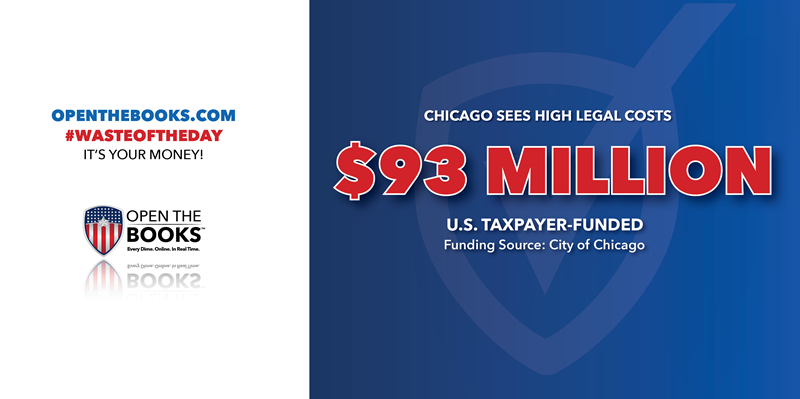
While Chicago Police officers battle rising crime, police administrators are battling rising legal costs. An investigation from the Better Government Association found that the City of Chicago has been paying an average of $93 million per year for legal judgments and settlements, including many involving the police department.
The investigation found that police spending on settlements and judgments has been over budget in 12 of the last 13 years. It also noted that citywide expenditures on settlements and judgments were often overbudget, prompting Mayor Lori Lightfoot to increase the budget for non-departmental legal costs.
Police settlements and judgments make up the vast majority of spending on legal costs, making up 72% of total settlement and judgment spending for the city. Of the 10 largest settlements or judgments paid by the city since 2010, six were paid for police misconduct according to the report.
In 2021, the most recent year available, police settlements and judgments cost Chicago taxpayers over $100 million, the highest in 11 years.
Given chronic under budgeting, it would be reasonable to raise the amount budgeted for incidents like these.
While Lightfoot raised the budget upon entering office in 2019, she has refused to raise it again, despite police payouts being over budget in 2019 and again in 2021. Citywide, what was spent in 2020 and 2021 didn’t exceed the budget.
The cost of these settlements and judgments is growing, suggesting little is being done to better train police to reduce incidents of misconduct.
While police misconduct erodes trust between communities and police, it also hurts city budgets, with taxpayers ultimately paying the price for police misconduct.
NYC’s Hip Hop Museum Gets $5M in Earmarks
January 18, 2023
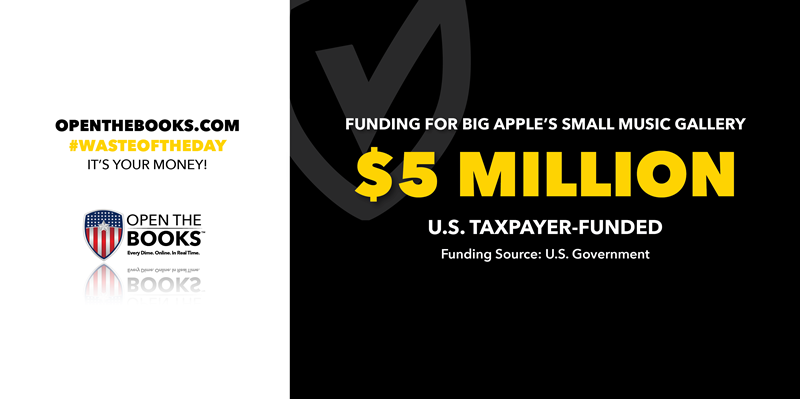
Among the over $16 billion worth of earmarks in the latest omnibus spending bill, New York senators made sure to allocate the New York Universal Hip Hop Museuma collective $5 million.
Earmarks are special funding mechanisms that allow federal lawmakers to designate money for local projects in their states or districts. Dubbed “the currency of corruption,” earmarks are often used on pet projects, but legislators voted to bring them back in 2021.
New York Sens. Chuck Schumer and Kirsten Gillibrand each earmarked funds for the Hip Hop Museum in The Bronx, with Schumer earmarking $2 million for “educational programming” and the “purchase of equipment,” and Gillibrand earmarking $3 million for an “interior fit out.”
The Universal Hip Hop Museum “celebrates and preserves the history of local and global Hip Hop to inspire, empower, and promote understanding.” The website details exhibits, educational programs, collections of artifacts, and an auditorium.
Examining its public tax filings, reveals the organization is largely propped up by government grants. It reported on its tax form 990 that it only had about 10,000 visitors in 2020, and of its $216,00 in total revenue, about $50,000 came from government grants. Despite its tight budget and its overall deficit in 2020, it still found $30,000 to lobby the government.
The vagueness of the earmark descriptions make it difficult to know exactly what the money will be used for, but what’s for certain is this project could have and should have been funded locally. The state of New York and the city can and should invest in their communities and institutions, but taxpayers in Alaska shouldn’t be on the hook for a museum in the Bronx.
Throwback Thursday: Defense Dept. Spent $162M for Newspapers and Periodicals
January 19, 2023
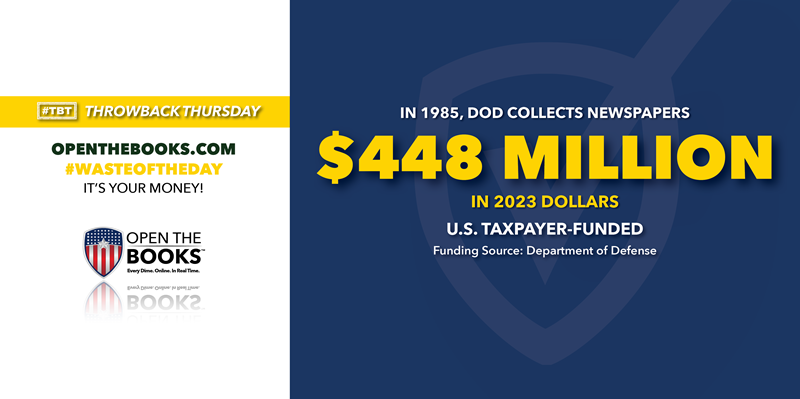
Throwback Thursday!
In 1985, the U.S. Department of Defense spent $162 million – over $448 million in 2023 dollars – in one year to produce and buy periodicals and newspapers for civilians and soldiers.
Sen. William Proxmire, a Democrat from Wisconsin, awarded the Defense Department his Golden Fleece Award for this reckless spending.
According to Proxmire, the Pentagon spent over $119 million on 1.9 million copies of magazines and newspapers like Newsweek and The Washington Post. He claims this makes the Pentagon the largest consumer of newspapers and magazines in the world. An audit found there were very few accounting controls in place for newspapers purchases, leading to runaway spending on newspapers that weren’t needed or read.
Additionally, the Pentagon published periodicals, spending $20 million to publish periodicals such as “Soldiers,” “Army Reserve Magazine,” and “Army Echoes.” Just 10 publications cost over $6.8 million annually to produce.
Overall, the military published 126 civilian publications, 25 safety bulletins, and 40 retiree publications in 1985. Proxmire noted that, “Many of these publications contain similar information and are directed to the same audiences.” The Pentagon itself admitted that many of these publications are nonessential.
Proxmire blamed much of the overlap on certain branches of the military not wanting to read other branches’ publications.
“Each military service, each major component, each recognizable group or category of individuals wants their own publication,” Proxmire said at the time.
While far fewer people today read newspapers, one thing that hasn’t changed is the bloated budgets and insane spending at the Department of Defense.
Interest Rates to Cost Government $2.6 Trillion Over Decade
January 20, 2023
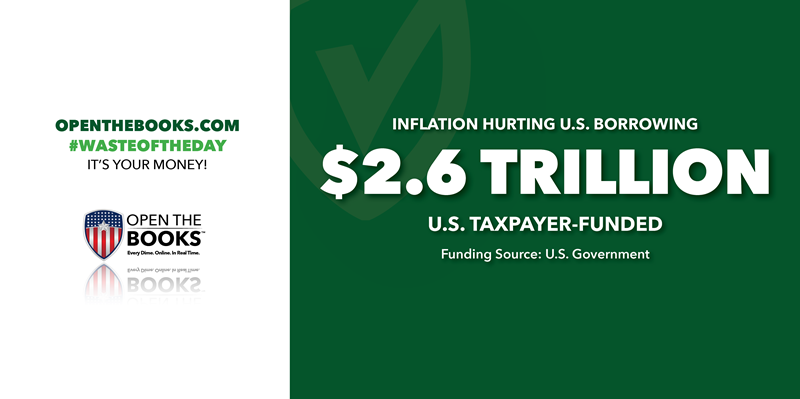
With low interest rates over the past 20 years, America’s exponentially-growing debt has seemed manageable, with some politicians even citing low interest rates as an argument to increase spending.
But rates are changing, and the federal government is woefully unprepared to begin financing its debt at higher interest rates.
A study authored by Manhattan Institute Senior Fellow Brian Riedl and published at the Peter G. Peterson Foundation found that each additional percentage point on the government’s interest rate would cost the federal budget $2.6 trillion over the decade, and $400 billion annually by 2032.
“The real potential danger to the federal budget comes from permanently higher interest rates that persist long after inflation has been defeated,” Riedl wrote.
He noted that the Federal Reserve has raised its federal funds rate from 0% to 2.5%, and will probably go much higher to crush inflation. But once inflation is lowered, the Fed will be unlikely to drop rates back to the 0-2.5% range that has prevailed over the past 14 years.
“Even after inflation has been defeated, investors will likely demand many years of higher interest rates and an inflation risk premium to avoid getting burned again by inflation,” Riedl wrote.
That $2.6 trillion, over 8% of the U.S.’s current $31.5 trillion in debt, isn’t paying for any good or services, or creating any value. It’s simply the cost of borrowing in higher interest rate environments.
As the cost of debt is rising, so is the amount of debt the government is accumulating. In 2020, the U.S. national debt was about $27 trillion, then $29 trillion in 2021, and now at the current $31.5 trillion.
The increase in the amount of debt, coupled with the cost of financing debt, is a problem that few in Washington, D.C. are willing to discuss. If action isn’t taken soon, our country may never dig itself out of the fiscal hole it finds itself in.
The #WasteOfTheDay is presented by the forensic auditors at OpenTheBooks.com.